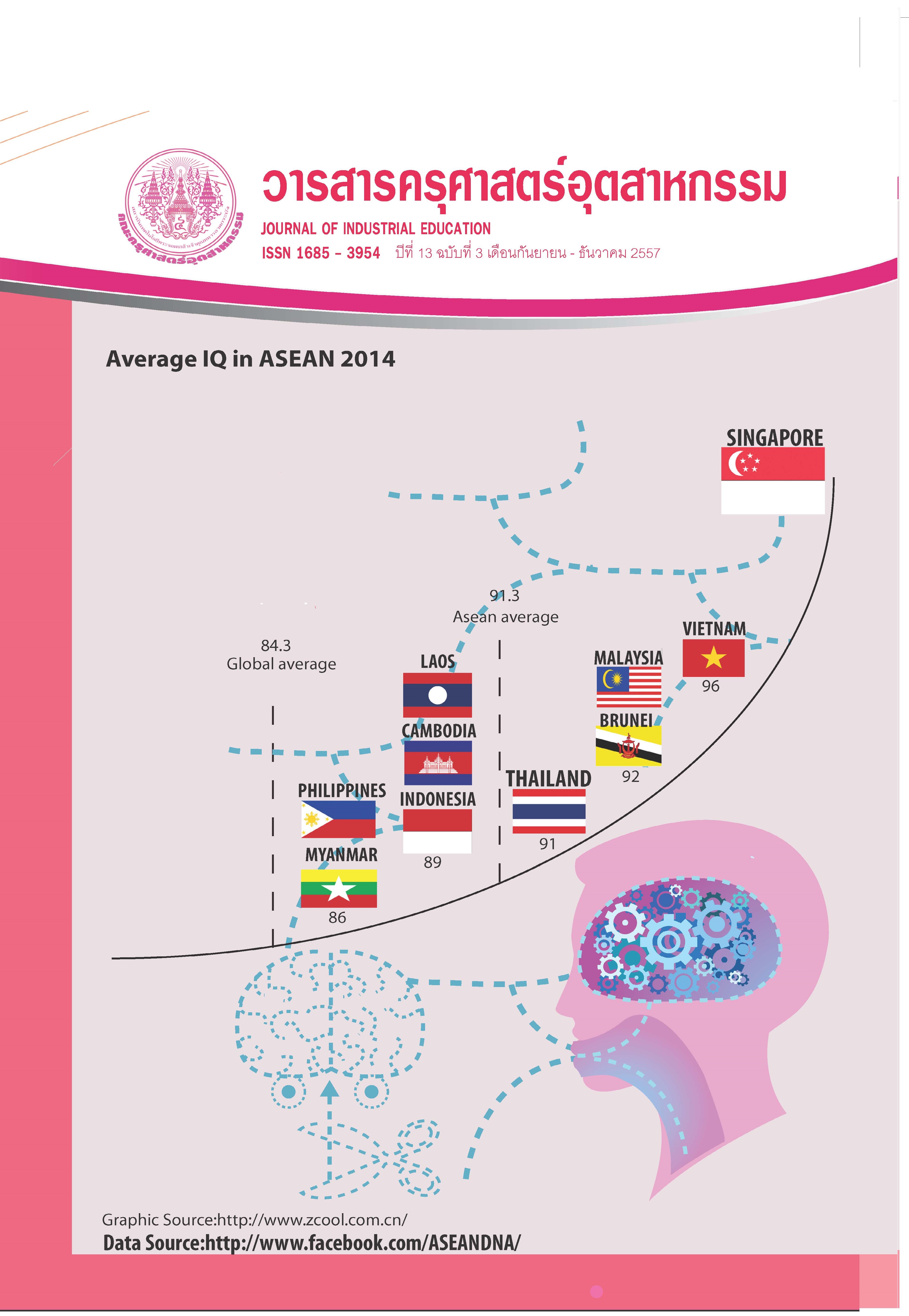Development of Information Technology Literacy and Volunteers by Using Blended Learning and Society Service Project Based Learning
Keywords:
information technology literacy, volunteers, blended learning, project service based learningAbstract
The objectives of this research were to developed information technology literacy and volunteers by using blended learning and society service project based learning. The samples of this study were random sampling, consisted of 48 undergraduate students of Information Technology program, Suan Dusit Rajabhat University and registered in the Information Technology Service Center Management of the 2013 academic year. The research instruments were 1) the evaluate form toward for information technology literacy 2) the evaluate form toward for volunteers 3) a learning achievement test and 4) a student satisfaction questionnaire for teaching using blended learning and society service project based learning. Data were analyzed by using frequency, percentage, mean ( ), Standard Deviation (S.D.) and t-test Dependent. The results of the study were as follows : 1) information technology literacy and volunteers could be developed by using blended learning and society service project based learning 2) information technology literacy of experimental group after the treatment was at the highest level (
= 4.28, S.D. = 0.37), volunteers of experimental group after the treatment was at the highest level (
= 4.36, S.D. = 0.39), mean of percentage for development of learning achievement of experimental group increased 17.67 percentage and overall, the students’ opinions expressed their satisfaction with teaching using blended learning and society service project based learning at the highest level (
= 4.34, S.D. = 0.36), there were significant at 0.00.
References
[2] วรพจน์ วงศ์กิจรุ่งเรือง และ อธิป จิตตฤกษ์. 2554.ทักษะแห่งอนาคตใหม่ : การศึกษาเพื่อศตวรรษที่ 21. กรุงเทพฯ: โอเพ่นเวิลด์ส.
[3] วิจารณ์ พานิช. 2554. แนะ ม.ยุคใหม่หนุน นศ.เรียนรู้ผ่านโจทย์ปัญหา –รับใช้สังคม.ค้นเมื่อวันที่11 มีนาคม 56, จากhttps://www.scbfoundation.com/news_info_detail_th.php?nid=682&cat_id=1.
[4] ชวาลา เวชยันต์. 2544.การพัฒนาแบบการเรียนการสอนที่ใช้เทคนิคการเรียนรู้ด้วยการรับใช้สังคมเพื่อส่งเสริมความตระหนักในการรับใช้สังคมทักษะการแก้ปัญหา และผลสัมฤทธิ์ทางการเรียนของนักเรียนมัธยมศึกษาตอนต้น.วิทยานิพนธ์ปริญญาดุษฎีบัณฑิต สาขาวิชาหลักสูตรและการสอน คณะครุศาสตร์จุฬาลงกรณ์มหาวิทยาลัย.
[5] Driscoll, M. 2002. Blended Learning: Let's get beyond the hype.E learning, 54, March p.1.
[6] Hiemstra, R. 1997. Self-directed learning.The International Encyclopedia of Education. 2 ed . Grate Britain: WheatonLtd, Exeter.
[7] ลัดดาวัลย์ เพชรโรจน์ สุภมาส อังศุโชติ และอัจฉรา ชำนิประศาสน์. 2550. สถิติสำหรับการวิจัยและเทคนิคการใช้ SPSS. กรุงเทพฯ: มิชชั่น มีเดีย.
[8] ฐิติยา เนตรวงษ์. 2555. การสอนโดยวิธีการไปทัศนศึกษาที่ส่งผลต่อความตระหนักในวัฒนธรรมไทยและผลสัมฤทธิ์ทางการเรียนของนักศึกษาหลักสูตรเทคโนโลยีสารสนเทศมหาวิทยาลัยราชภัฏสวนดุสิต. รายงานการวิจัยในชั้นเรียน มหาวิทยาลัยราชภัฏสวนดุสิต.
[9] นภดล จักรแก้ว เลิศลักษณ์ กลิ่นหอมและรวีวรรณ ชินะตระกูล. 2556.การพัฒนาบทเรียนผ่านระบบเครือข่ายอินเทอร์เน็ตเพื่อการทบทวน เรื่อง ภาษาซี วิชา การเขียนโปรแกรมเชิงโครงสร้าง.วารสารครุศาสตร์อุตสาหกรรม, 12(2), น. 32-37.
Downloads
Published
How to Cite
Issue
Section
License
"The opinions and contents including the words in papers are responsibility by the authors."
"ข้อคิดเห็น เนื้อหา รวมทั้งการใช้ภาษาในบทความถือเป็นความรับผิดชอบของผู้เขียน"



